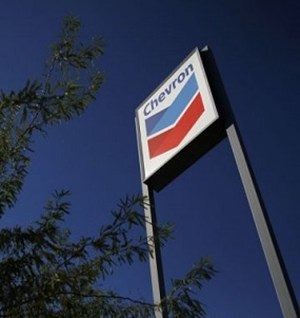Enverus: $14 billion in Q3 2023 upstream M&A overshadowed by October’s historic Exxon, Chevron acquisitions
(WO) — Enverus Intelligence Research (EIR), a subsidiary of Enverus, is releasing its summary of Q3 2023 upstream merger and acquisition (M&A) activity.
In Q3, U.S. upstream M&A cruised along with $14 billion transacted in 25 deals. A liftoff in corporate consolidation picked up the slack of declining opportunities to buy private assets with two-thirds of deal value last quarter coming from combinations between public companies. That accelerated to historic levels in October with ExxonMobil’s $60 billion acquisition of Pioneer Natural Resources in the third-largest upstream deal ever by enterprise value, and Chevron purchasing Hess for $53 billion.
“As anticipated, the pace of consolidation slowed for private E&Ps as the cream of the crop in terms of scale and quality has largely, but not entirely, been bought out,” said Andrew Dittmar, senior vice president at EIR. “The next logical step in consolidation is more tie-ups between public producers. That could have slowly built toward a historic deal like ExxonMobil’s purchase of Pioneer but instead that happened right out of the gate and could well be the largest deal of the shale era.”
Prior to its expansion in the Permian with the purchase of Pioneer, ExxonMobil placed a smaller bet on carbon capture utilization and storage (CCUS) during Q3 2023 with its acquisition of Denbury for $4.9 billion. While Denbury did bring to the table legacy oil production, the core driver of the acquisition is likely the infrastructure the company has in place, specifically CO2 pipelines that support ExxonMobil’s plan to build a carbon sequestration hub along the Texas-Louisiana Gulf Coast.
“ExxonMobil is committing to its traditional energy business, which has become extremely profitable for the major, while working to decarbonize operations to meet its emissions targets,” Dittmar said. “This is coming from a combination of reducing upstream emissions and building its carbon sequestration business.”
“By acquiring Pioneer, ExxonMobil is not only expanding its Permian portfolio, but also speeding up the Permian's transition to a low-carbon future. ExxonMobil has set an ambitious goal of achieving net-zero emissions by 2030 for its existing Permian assets and by 2035 for the newly acquired Pioneer asset, which is 15 years ahead of Pioneer’s original plan,” said John Gutentag, product owner at Enverus.
While emission intensity matters as companies set their net zero goals, it doesn’t appear to be playing a major role in how they screen targets for acquisitions.
“Despite seeing more airtime of the environmental, social and governance justification of deals, we have seen no clear evidence of the U.S. upstream market valuing assets based on their emission intensity,” added Gutentag. “However, the new emissions reporting rules proposed by the Environmental Protection Agency (EPA), the methane fee introduced in the Inflation Reduction Act, and the EPA’s regulatory agenda are influencing the asset selection process, as some assets will experience disproportionately high fees and retrofitting costs while others will be minimally affected.”
Emissions intensity didn’t deter Chevron in October’s other historic deal, the $53 billion purchase of Hess. Hess’ Bakken operations screen near the highest emissions intensity among public Bakken operators at just under 20 kg CO2e/boe. However, Chevron, like Exxon, will look to rapidly improve those metrics. From the standpoint of overall emission from oil and gas operations, acquisitions by majors are very bullish for the industry improving its environmental footprint.
The Bakken appears to play a minimal supporting role in a deal where Enverus anticipates 80% of the value is weighted toward Hess’ interest in Guyana assets. Chevron’s focus on international assets in the acquisition of Hess leaves the door open for more shale deals down the road while keeping a balanced portfolio. However, with $53 billion spent on Hess, those shale deals are likely to be smaller, like its $7.6 billion purchase of PDC Energy in Colorado’s DJ basin.
“There are certain parallels between the moves by ExxonMobil and Hess as the majors are looking to refill their pipelines to maintain production against a declining asset base. That indicates they view their legacy businesses staying profitable into the 2030s,” said Dittmar. “After 10 years of slashing spending on exploration and focusing on getting capital back to shareholders, it’s time to look at growth again for oil and gas production.”
The moves by ExxonMobil and Chevron are likely to ignite further consolidation among smaller oil and gas companies as they scramble to remain competitive and secure remaining drilling opportunities. Already, reports have emerged of merger talks between large-cap independents including a potential combination between oil producers Devon Energy and Marathon Oil and gas-focused producers Chesapeake Energy and Southwestern Energy.
The large independents are also likely to go on shopping sprees targeting smaller and midsize producers. The stocks of these smaller companies almost all trade at meaningful discounts to the larger E&Ps, raising the opportunity for deals that create value for both buyers and sellers. That was the case in Q3 2023’s other corporate deal, the purchase of Earthstone Energy by Permian Resources. Because Earthstone’s stock was being undervalued by the market relative to the quality of its asset base, Permian Resources was able to pay a premium on the share price while keeping the deal very attractive to its own financial and inventory metrics.
“Within U.S. shale, the most attractive acquisition targets are going to be companies with exposure to the Permian basin,” concluded Dittmar. “The Permian is uniquely positioned among U.S. shale plays as having both the most remaining high-quality inventory and the greatest opportunity for resource expansion. That expansion will keep shale production humming into the 2030s, albeit at a higher cost of supply. The outlook for shale is bright from here and M&A will be robust as companies want to secure their piece of that future.”



